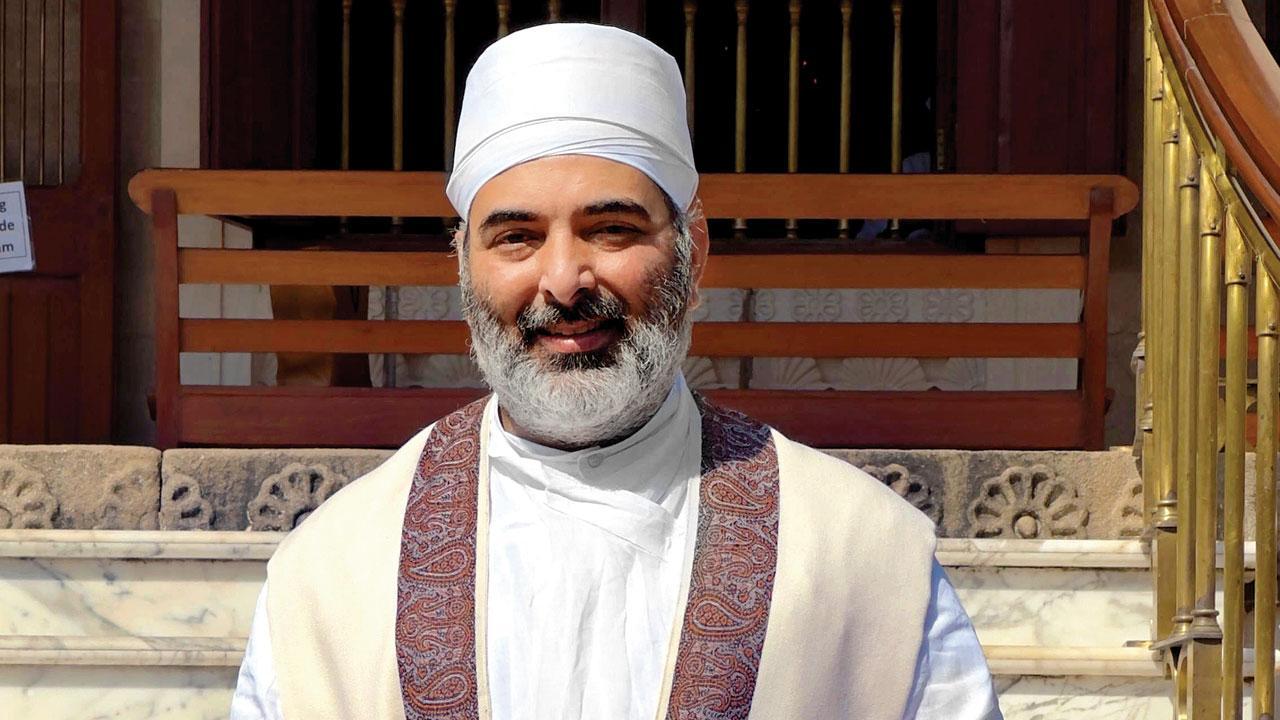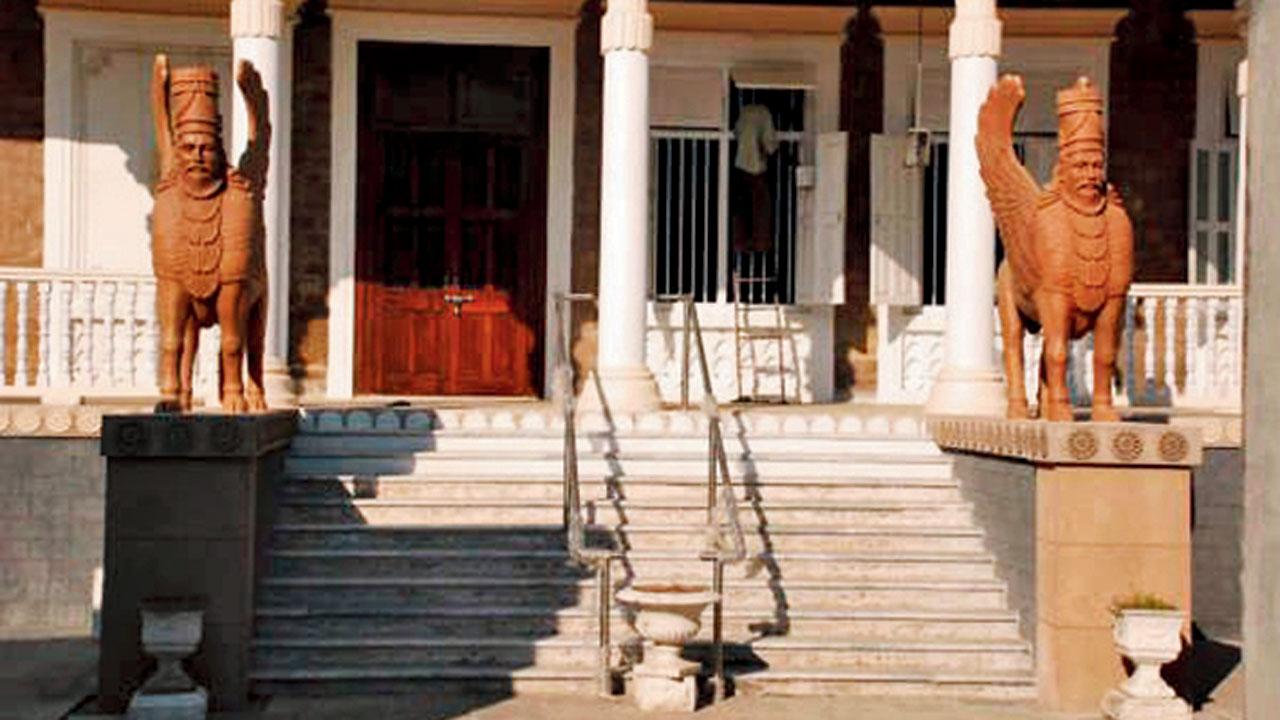Newly ordained Ervad Mirza speaks to mid-day about challenges that have plagued priesthood in recent years

Dastoor Tehemton Mirza
Key Highlights
- Gujarat’s Udvada is home to the Iranshah Atash Behram
- The Parsi fire temple is known for its unique tradition of dual high priests
- Tradition faced an eight-year hiatus following passing of Vada Dastoorji Peshotan Mirza
Gujarat’s Udvada is home to the Iranshah Atash Behram, which holds a fire sacred to the Zoroastrians of India, burning continuously for over a millennium. The Parsi fire temple is known for its unique tradition of dual high priests, a practice rooted in three centuries of history. The tradition faced an eight-year hiatus following the passing of Vada Dastoorji Peshotan Mirza in 2016. However, on February 11, the Udvada Athornan Anjuman (the body responsible for the appointment of a high priest in Udvada) reinstated the position, appointing 43-year-old Ervad Tehemton Mirza as the temple’s second high priest.
Gujarat’s Udvada is home to the Iranshah Atash Behram, which holds a fire sacred to the Zoroastrians of India, burning continuously for over a millennium. The Parsi fire temple is known for its unique tradition of dual high priests, a practice rooted in three centuries of history. The tradition faced an eight-year hiatus following the passing of Vada Dastoorji Peshotan Mirza in 2016. However, on February 11, the Udvada Athornan Anjuman (the body responsible for the appointment of a high priest in Udvada) reinstated the position, appointing 43-year-old Ervad Tehemton Mirza as the temple’s second high priest.
The dual hierarchy, upheld since the arrival of the Sanajana priests in the region three centuries ago, reflects a steadfast commitment to democratic principles within the Anjuman. After the passing of Vada Dastoorji Peshotan Mirza, Dastoorji Khurshed was the sole high priest of the Iranshah Atash Behram Udvada.
Those acquainted with Mirza's ascension to the high priesthood sensed a shift in dynamics behind closed doors in Udvada by December 2023. A consensus emerged that there existed a pressing necessity to restore equilibrium. During the subsequent Annual General Meeting of the Anjuman in January 2024, an agenda item addressing the appointment of a second high priest was introduced.

The Iranshah Atash Behram fire temple in Udvada
“I conveyed my sentiments to the members of the Anjuman, following which, they unanimously embraced my candidacy and urged me to assume the role of high priest, which had remained unoccupied,” expressed Mirza, who hails from a lineage deeply entrenched in priesthood on both parental fronts. “My family takes immense pride in our affiliation as practising priests with the premier Fire Temple globally.”
“In my last few years as a member serving on the Managing Committee of the Udvada Athornan and Udvada Samast Anjumans, I have come to know first-hand several issues with respect to the administration of these trusts as well as managing the affairs and infrastructure of the Iranshah Atashbehram. I have also had several Anjuman members approach me with problems they are facing in the practice of their religious life due to various extraneous factors,” he said.
Dastoor Mirza's elevation to the position of high priest also sheds light on the broader challenges confronting Parsi priesthood in India. Raised in a middle-class Parsi household, he pursued his priestly education at the Dadar Athornan Institute in Mumbai. Initially employed as a cyber cafe manager in 2000, he later transitioned to various senior corporate roles within the sales domain.
Decline in priesthood
“The decline in priesthood is not a recent phenomenon. The community has grappled with this issue for nearly a century. The establishment of the two priest schools (madrassas) in Mumbai nearly a century ago aimed to address this crisis by nurturing high-quality priests. These institutions have indeed produced some of the finest priests, both past and present, over the last century,” he explained.
“Poor compensation and societal stigma surrounding priesthood within the community are among the underlying factors contributing to this predicament. Merely injecting funds into the issue won't yield the desired outcome. Priesthood transcends monetary considerations; it's a vocation of the heart and soul. We must cultivate an environment within the Parsi community conducive to nurturing exceptional priests,” he emphasised, adding that inadequate compensation is a primary reason for many opting for secular employment instead of dedicating themselves to full-time priestly duties.
“The problem was not that we did not appoint a second high priest for eight years… the problem was that no one wanted to step up to the post,” states Tehmton Sidhwa, a member of the Udvada Athornan Anjuman Committee. Reflecting on Dastoor Mirza's appointment as high priest, Sidhwa recounts “the first corrective steps” taken to address this concern in December 2020, when the Anjuman elected three new members to its managing committee, including Mirza himself.
“Over the following three years, he [Mirza] demonstrated his capabilities, collaborating with his colleagues to enhance transparency, efficiency, and trust within both the committee and the Anjuman. His unwavering commitment to the Anjuman's collective authority and the traditional values of our religion prompted several members to urge him to assume the vacant position,” Sidhwa elaborated. He further stated that numerous Anjuman members have pledged their support to work closely with Mirza, acknowledging his willingness to step forward in the Anjuman's best interests.
“Dastoor Tehemton has a natural knack of connecting with all age groups and specifically the younger generation… his loving demeanour, his truly loveable sense of humour coupled with deep religious knowledge and beliefs will be a very strong positive influence on our younger generation within the Parsi Mazdayasni Zarthosti community,” said his childhood friend Kaizad Sidhwa.
A first in community history
“The youth represent the future of our community; they are the cornerstone of the Parsi Irani legacy,” said Viraf Mehta, chairman, Bombay Parsi Punchayat (BPP). “As technology continues to advance, including the rise of AI, it's imperative that we adapt to these changes. Having individuals who can embrace and harness these advancements for our benefit is crucial. The appointment of a high priest in his 40s is a testament to the readiness of young individuals to shoulder responsibilities traditionally held by senior citizens. For the first time in our community's history, both the High Priest and the Chairman of the BPP are in their 40s. Let us stand united, supporting and inspiring one another as we guide our illustrious community into the next era.”
Asked about how important was it to “restore balance” in Udvada, Mehta said, “It is always important for us to keep alive our customs and traditions since that is all we have to share with the next generation. It is what sets us apart from the rest. I am glad to see the vacant seat of the second High Priest of Udwada has been filled and wish both our Vada Dasturjis grand success.”
“I have full faith in the Modi Sarkar and the Indian system,” said Dastoor Mirza. “I believe that once they are made aware of the facts and ground realities, they will swiftly move to help our community as they have done so many times in the past. As for restoring balance (in Udvada), I don’t see my taking on the responsibility of high priest from that perspective. I have taken up this post to serve Iranshah and our Udvada Anjuman by managing its affairs as per its constitution.”
8
No of years high priest post has been vacant
 Subscribe today by clicking the link and stay updated with the latest news!" Click here!
Subscribe today by clicking the link and stay updated with the latest news!" Click here!










